No products in the cart.
June 28, 2024 10:07 am
June 28, 2024 10:07 am
Norse mythology is filled with gods and epic stories, but one deity stands above them all: Odin, the All-Father. As the leader of the Norse gods, Odin holds immense significance in their pantheon.
But he is more than just a ruler; he represents wisdom, war, poetry, and magic. Odin is known for his insatiable thirst for knowledge and his tactical brilliance in combat. He wields authority in multiple areas, which makes him a complex figure admired by countless individuals.
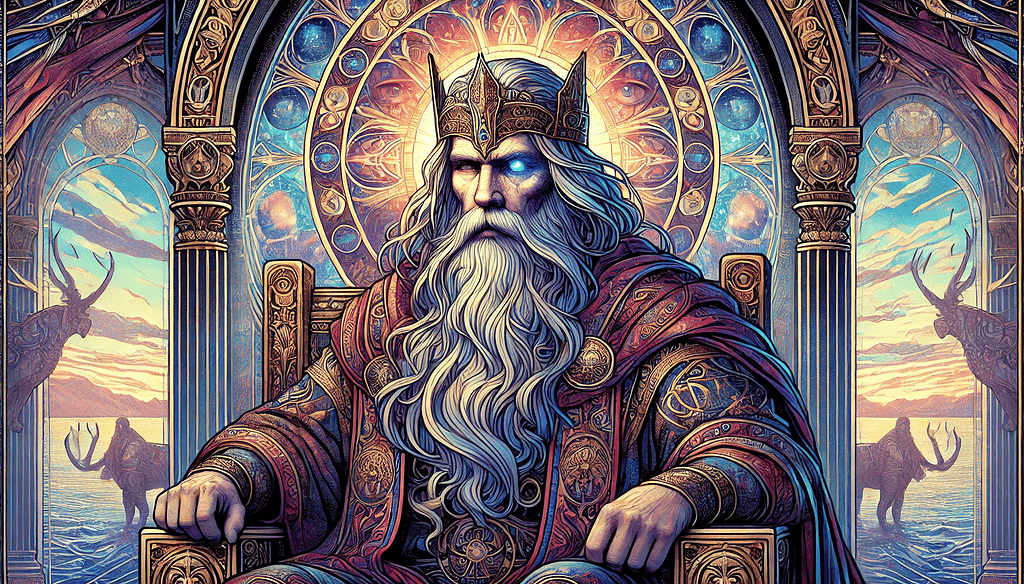
Odin, a central figure in Norse mythology, has many names that reflect his complex nature. The name “Odin” comes from the Old Norse “Óðinn,” which is rooted in the Proto-Germanic “*Wōðanaz,” meaning “the inspired one” or “fury,” showing his dual personality as both a wise and warlike god. He is also known by other names such as:
These different names reveal the various qualities and roles that Odin encompasses in different mythologies.
Odin is not only significant in Norse mythology but also holds a crucial position in wider Germanic paganism. He is revered by other Germanic tribes, displaying similar characteristics across these cultures:
This widespread worship shows how Odin was highly regarded across different Germanic societies, often being associated with war, wisdom, and death.
Examining Odin alongside Woden reveals interesting similarities and differences between the two. Both gods share fundamental qualities like their connection to warfare and wisdom. However, cultural distinctions shape their portrayals:
These similarities suggest a shared mythological background while also highlighting how local interpretations can give rise to unique aspects of a god’s character.
Both Odin and Woden represent the archetype of a wise warrior god, underscoring their central role in shaping the religious beliefs of their respective societies.
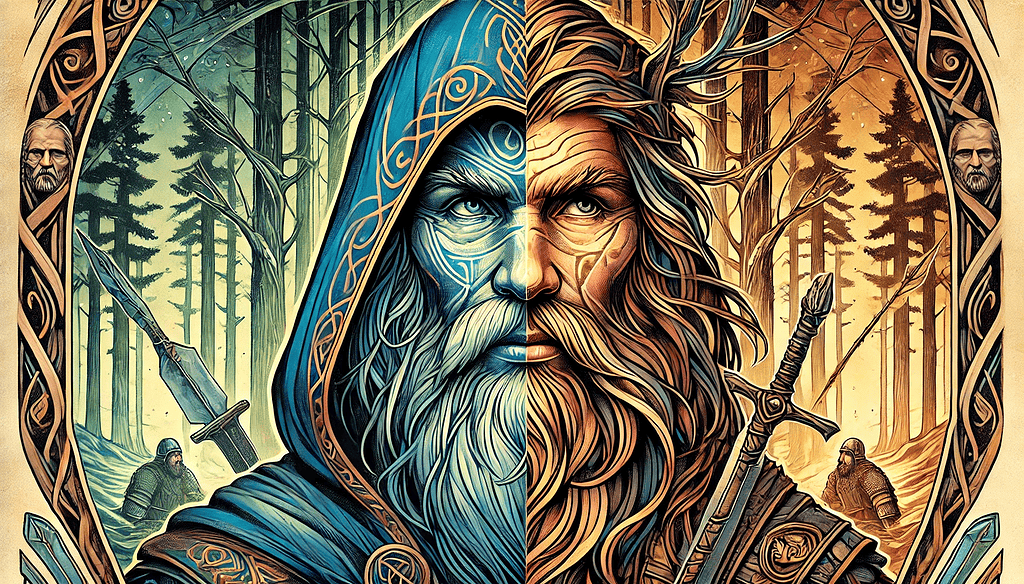
Odin has many different roles in Norse mythology, each revealing a unique part of his power and control.
As the God of War, Odin represents the intense energy of the battlefield. Warriors respected him not only for his physical might but also for his cleverness in battle tactics.
Odin’s connection to war is clearly shown through his choice of fallen warriors to join him in Valhalla, training them for Ragnarok, the predicted end of the world. This role emphasizes Odin’s deep involvement in shaping the destiny of both humans and gods.
Odin’s search for wisdom is famous, showing his unrelenting desire for knowledge and insight. His act at Mimir’s Well—where he sacrificed an eye to gain profound understanding—represents his strong dedication to wisdom.
As a skilled user of runes, Odin discovered the meanings behind these ancient symbols, utilizing them to possess great magical abilities.
The myth where Odin hangs from Yggdrasil, the World Tree, for nine days and nights is a testament to his dedication. This self-sacrifice granted him a deeper understanding of runes and their magical properties.
Odin’s link to poetry and inspiration comes from his role as a supporter of skalds (poets). He is known for introducing the mead of poetry to both gods and humans. This mead gives those who consume it unmatched talent in crafting words and expressing themselves creatively.
By encompassing these different roles—warrior, wise one, poet—Odin is a complex god whose influence can be seen in various aspects of life in Norse mythology.

In Norse mythology, there are several myths that shed light on the importance of Odin in the Norse world. These stories reveal his wisdom, strength, and wide-ranging control over both gods and humans.
One story tells of how Odin sought after knowledge and found Mimir’s Well, a sacred place of great wisdom. According to legend, Odin gave up one of his eyes in exchange for a drink from the well.
This act symbolizes his dedication to gaining extraordinary understanding no matter what it takes. The sacrifice shows Odin’s role as a seeker of wisdom, embodying the belief that true knowledge often requires significant personal loss.
Another myth that showcases Odin’s power and dedication is the tale of his hanging on the World Tree, Yggdrasil. In this story, Odin sacrifices himself by impaling himself on a spear and hanging from the tree for nine days and nights.
This extreme act demonstrates his commitment to obtaining the knowledge of the runes, a sacred alphabet associated with magic and divination. Through this self-sacrifice, Odin gains profound insight and mastery over these mystical symbols, further emphasizing his role as a wise and learned deity.
These myths highlight Odin’s multifaceted nature, portraying him not only as a mighty warrior but also as a seeker of wisdom and knowledge. His influence extends beyond traditional gender roles, challenging societal norms and offering a more complex understanding of divinity within Norse mythology.
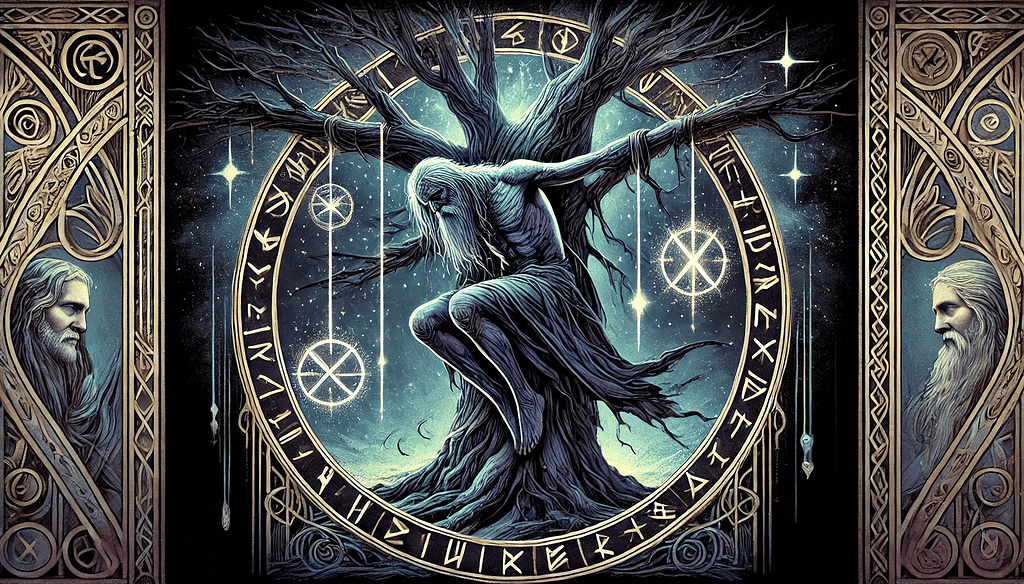
Another fascinating tale is about Odin’s journey to obtain Sleipnir, his horse with eight legs. Sleipnir, born from Loki in the form of a mare and the stallion Svaðilfari, represents unmatched speed and strength.
In this myth, Odin rides Sleipnir across different realms, showing his power over both the physical world and the spiritual realm. Sleipnir’s special qualities make him an extraordinary companion for Odin, highlighting the god’s connection with supernatural forces.
Valkyries, fierce warrior women who serve Odin, have a crucial role in determining who lives and dies in battle.
These “Choosers of the Slain” are sent by Odin to the battlefields to select the slain who are worthy of a place in Valhalla. Some Valkyries had the power to cause the death of the warriors they did not favor, while others protected those dear to them.
Valhalla is not just a hall but also a symbol of everlasting honor for those chosen by Odin himself. It is a majestic hall located in Asgard, where the warriors, known as Einherjar, live blissfully under Odin’s leadership.
They feast on the flesh of a boar that is slaughtered daily and made whole again each evening, and they drink liquor that flows from the udders of a goat.
Their sport is to fight one another every day, preparing for Ragnarök—the ultimate destruction—when they will march out of Valhalla to fight alongside Odin against the giants.
These myths show us different aspects of Odin’s character and his important position among the gods. Each story deepens our understanding of why he is respected and feared as the All-Father by both gods and humans.
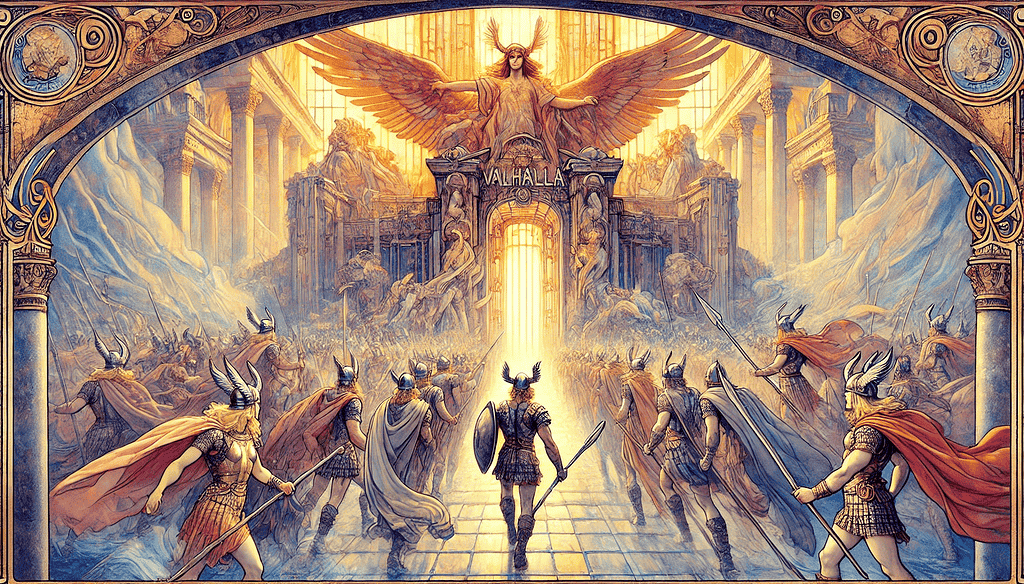
Odin’s symbolism in Norse mythology is rich and multifaceted, reflecting his deep connection with wisdom, war, and magic. Each symbol associated with him provides insight into his complex character and the reverence he commanded.
Odin is often depicted with two ravens perched on his shoulders or flying beside him. These ravens, Huginn (thought) and Muninn (memory), are not mere companions but powerful extensions of his consciousness. They fly across the world daily, gathering information and bringing it back to Odin. This symbolizes his omnipresence and deep wisdom.
The wolves Geri (the ravenous) and Freki (the greedy) serve as Odin’s loyal companions. In mythological tales, these wolves are often seen sitting at Odin’s feet or accompanying him on his travels. They embody his martial prowess and ferocity in battle. Their presence highlights Odin’s dual nature as both a wise ruler and a fearsome warrior.
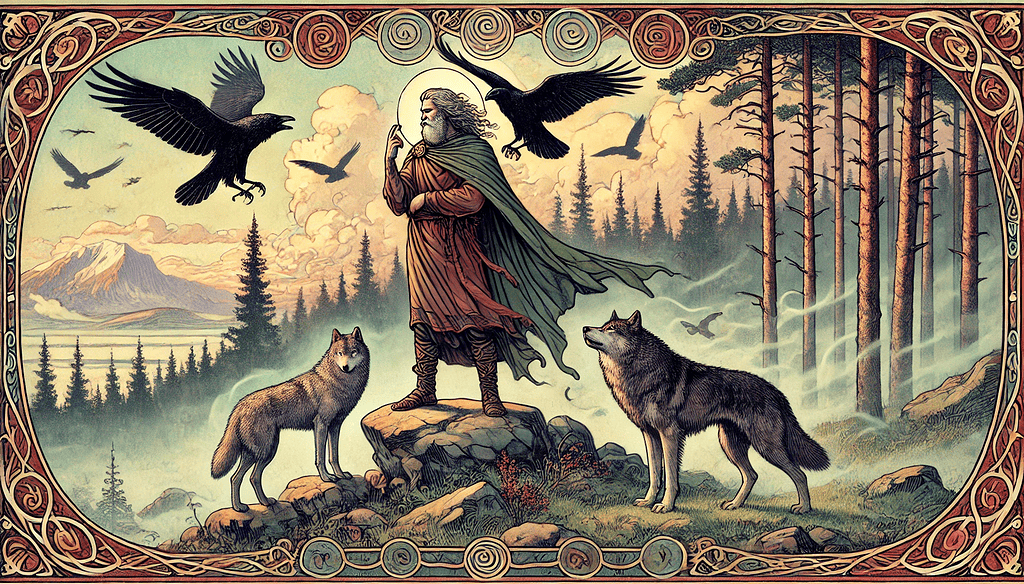
Gungnir, Odin’s spear, is a weapon forged by the dwarves, renowned for its perfect balance and unerring aim. This spear represents not only Odin’s role as a god of war but also his authority over fate itself. In battles, it is said that Gungnir never misses its mark, underscoring the inevitability of Odin’s will.
Sleipnir, the extraordinary eight-legged horse ridden by Odin, is a creature born of both divine and monstrous lineage. Sleipnir can traverse great distances quickly, even crossing into different realms of existence.
This horse signifies not just physical swiftness but also spiritual journeying and exploration of the unknown—Odin’s quest for knowledge beyond mortal comprehension.
These symbols—ravens, wolves, spear, and horse—each tell a part of Odin’s story, emphasizing different aspects of his dominion over war, wisdom, and the mystical arts.
Understanding these symbols offers deeper insight into why Odin remains such a pivotal figure in Norse mythology.
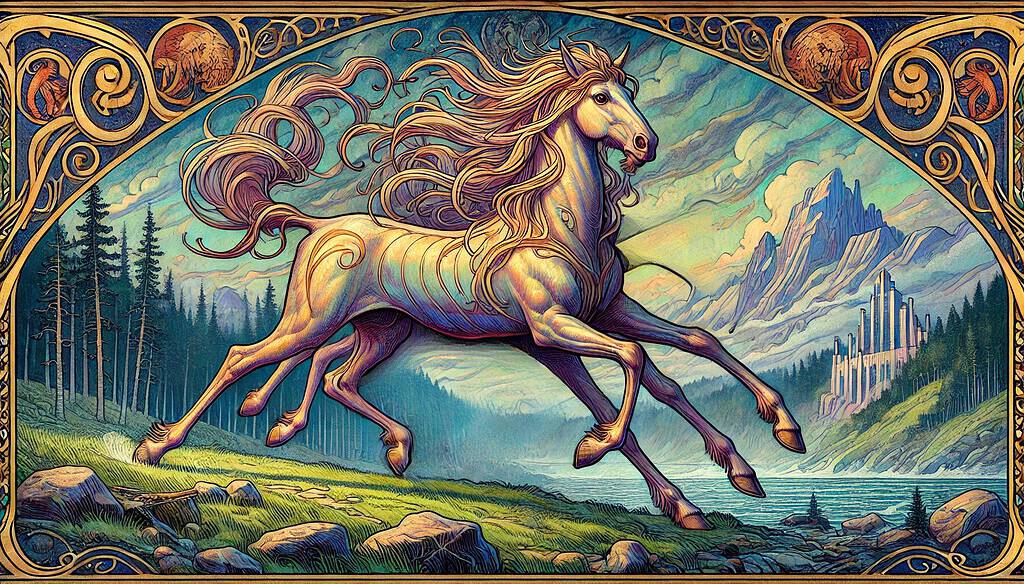
Odin’s iconic appearance is deeply ingrained in Norse mythology and art, making him instantly recognizable. Often depicted as an older man with a long beard, he exudes wisdom and authority. His attire typically includes a wide-brimmed hat and a cloak, giving him an air of mystery and otherworldliness.
Several elements are commonly associated with Odin:
These visual elements not only highlight his divine attributes but also serve as powerful symbols of his multifaceted role in Norse mythology.
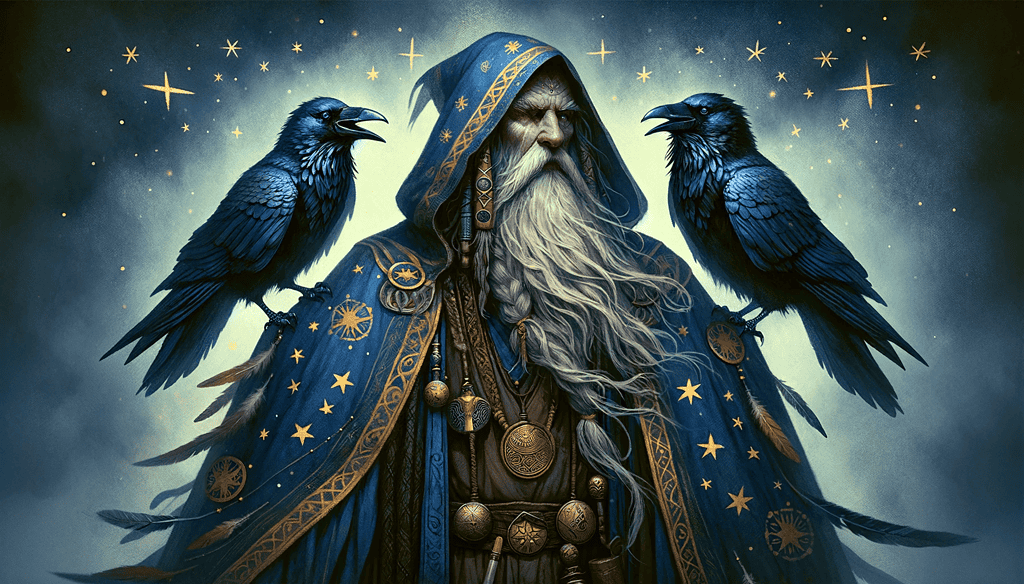
Odin’s lineage traces back to his parents, Bor and Bestla. He shares this divine heritage with his brothers, Vili and Ve. This trinity of siblings played a crucial role in shaping the cosmos, including the creation of humans.
The relationship between Odin and Loki is unique within Norse mythology. Bound not by blood but by a ritualistic bond known as blood brotherhood, their connection signifies an unbreakable alliance.
Loki, despite being the son of the jötunn Fárbauti and the goddess Laufey, is counted among the Aesir due to this bond.
Loki’s dual nature makes his relationship with Odin complex:

Modern portrayals, especially through Marvel Comics and films, depict Loki as Odin’s adopted son and Thor’s brother. This representation diverges from traditional myths where Loki and Thor are seen more as comrades than siblings.
Their relationship is marked by mutual respect yet frequent discord due to Loki’s mischievous deeds.
The bond between Odin and Loki highlights the complexities inherent in Norse mythology. This chosen kinship underscores themes of loyalty, betrayal, and redemption which permeate many of these ancient stories.
Odin is a complex and multifaceted figure in Norse mythology, representing many different qualities and roles. His impact can be seen in various aspects of Norse culture:
Studying Odin provides us with valuable knowledge about the ancient Norse society’s beliefs and principles, helping us understand their perspective and cultural background.